![10 Customer Onboarding Best Practices [+ Mistakes to Avoid] cover](https://blog-static.userpilot.com/blog/wp-content/uploads/2024/01/10-customer-onboarding-best-practices-mistakes-to-avoid_db0a2298267e8441b15de93a9161add6_2000.png)
Ever wondered if there’s one magic ingredient that helps SaaS companies improve adoption, boost satisfaction, reduce churn, and create product advocates?
There is! Excellent customer onboarding.
In this article, I will share 10 best practices for customer onboarding that you should follow. You will also discover examples of effective customer onboarding from leading SaaS companies and learn how to implement your onboarding strategy with Userpilot.
Try Userpilot Now
See Why 1,000+ Teams Choose Userpilot

1. Simplify the sign-up process
Your sign-up process is the first testing touchpoint in the customer journey.
Your goal? To make it smooth so your new customers can get inside your product and start experiencing its value in no time. Because the longer it takes, the greater the risk they lose interest and drop off.
Here’s how to remove friction from the sign-up flow:
- Enable single sign-on (SSO): Allowing users to sign up with their existing accounts, for example, Gmail, Apple, or LinkedIn, can increase conversions by 20-40%.
- Provide real-time feedback and guidance: Offer in-line validation and placeholders to help users avoid errors.
- Create a strong CTA: Make the button easy to see and highlight the benefits of signing up. For instance: “Start Growing Your Business Today.”
Canva is a great example of a frictionless sign-up process. It has SSO, and the whole sign-up flow consists of 4 steps.
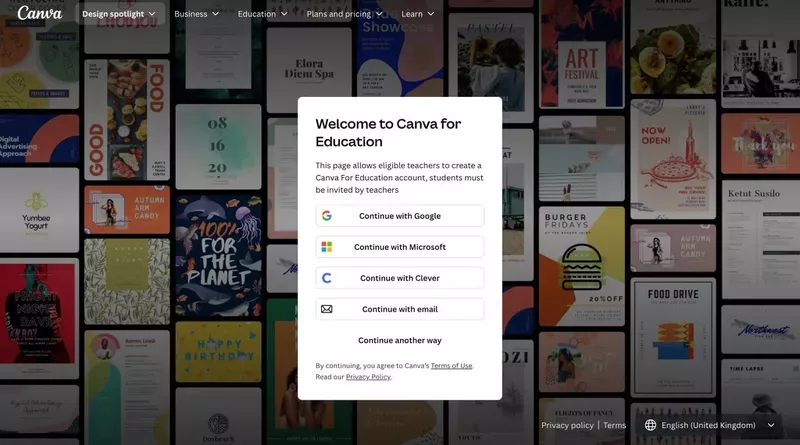
Mistakes to avoid in the sign-up process
Here are two mistakes that add unnecessary friction to the sign-up process:
- Asking too many questions: Omnisend has found that forms with three fields convert best. So, ask only for a user’s email address, name, and company. You can collect more information later.
- Demanding email verification: Do you really need it? If yes, wait until the customer logs in and engages with the product. If you need immediate confirmation, make it easy by providing shortcuts to popular email apps.
2. Welcome customers with a personalized greeting message
As soon as a new customer signs into the product, greet them with a welcome message. A warm greeting makes customers feel valued and sets a positive tone for the relationship.
How do you make your welcome message hit the mark?
- Express gratitude and excitement: Acknowledge the customer’s choice and show excitement about their journey.
- Guide users toward value: Include a clear call-to-action (CTA) that shows users what to do next, such as setting up their profile or viewing an introductory product tour.
- Use friendly language: Make the message feel like it’s from a real person, not a bot. For example, new Kontentino users receive a welcome message from Hana, the company’s Head of Customer Success.
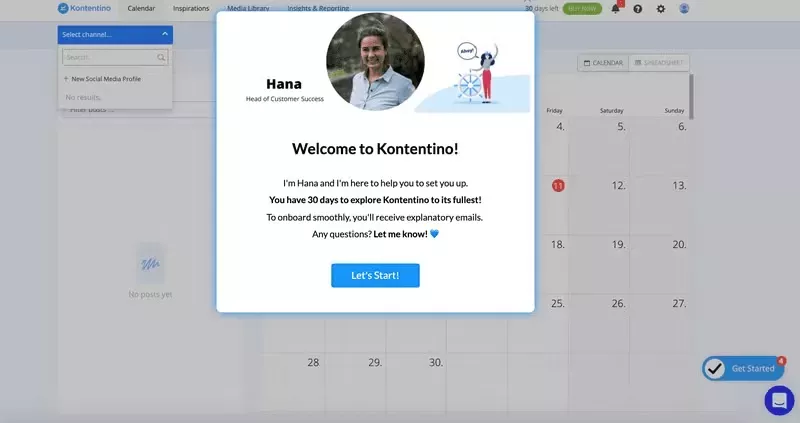
Mistakes to avoid when greeting new customers
Crafting a welcome message may seem straightforward, but many fall into one of these traps:
- Overwhelming users with information: Avoid cramming in too many details. They can confuse new users.
- Using only one channel: In addition to welcome screens inside the app, send your users a welcome email or a chat message to make sure they don’t miss it.
- Being too generic or impersonal: Messages that lack personalization may feel like spam. Instead, aim for a conversational tone that makes the message feel genuine.
How would you rate your current customer onboarding process?
Discover your strengths and weaknesses based on customer onboarding best practices.
- Excellent, it’s fully optimized.
- Good, but could be improved.
- We don’t have a formal process.
- I’m not sure how to evaluate it.
3. Personalize the customer onboarding process
Personalization is the secret sauce of a successful onboarding experience.
Personalized onboarding flows focus only on the key features a specific user needs to achieve their goals.
The result? They experience the product value in less time.
Here’s how to do it:
- Segment the users: Use welcome surveys to collect information about new user roles and JTBDs.
- Analyze user paths: Conduct path analysis to identify the happy paths for different user personas.
- Tailor the onboarding experiences: Create onboarding flows to guide different user groups along their most optimal paths to activation.
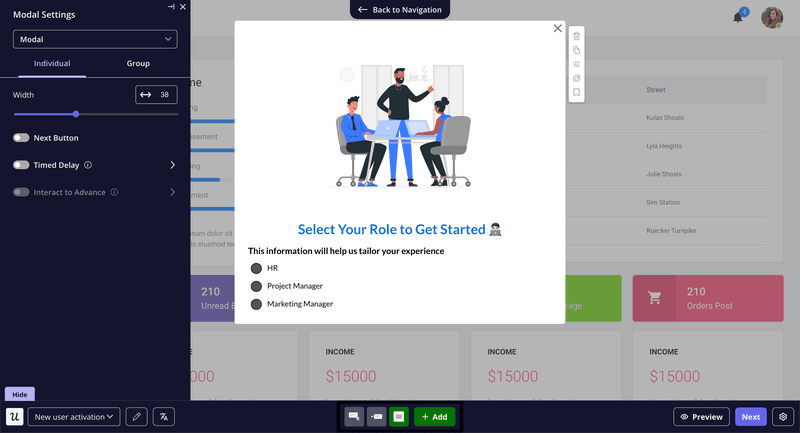
Mistakes to avoid when creating the onboarding process
Teams often undermine their onboarding efforts by:
- Not collecting enough information: Sure, longer welcome surveys add friction. But you need the information to profile your new users. B2B customers are more understanding in this respect than B2C ones.
- Overwhelming new users with features: Focus on essential features only and leave the more advanced ones for later stages of the customer journey.
4. Drive new customers to the activation point with checklists
Checklists are the backbone of effective customer onboarding.
They add structure to the onboarding experience and motivate users to complete key tasks through a psychological process called the Zegarnik Effect. In a nutshell, people find it difficult to focus on other things before they complete planned jobs, and the checklist gets these jobs in front of them.
Userpilot customers know this, and they put onboarding checklists to good use. For instance, Sked Social used them to improve their free-to-paid conversions by a whopping 300%.
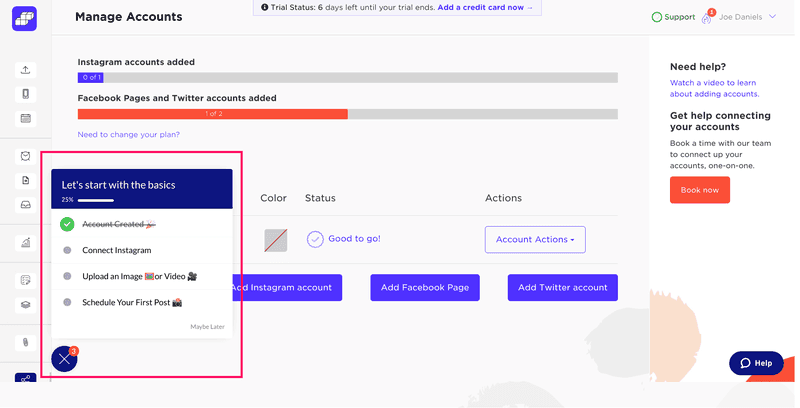
Mistakes to avoid when creating checklists
When designing your checklists, watch out for these common pitfalls:
- Including too many items: Use checklists to introduce only the key 3-5 tasks whose completion correlates with activation and product adoption.
- Not providing detailed guidance: Checklists tell users what to do but not how, so pair them with interactive walkthroughs.
- Not using progress indicators: Add progress bars and show how long onboarding tasks should take to set realistic expectations and motivate users.
5. Celebrate achievements to engage users
Celebrating small wins, like completing a key task, makes onboarding feel rewarding and motivates users.
The easiest way to do it? Trigger a celebratory animation or congratulatory message, like the one Attention Insight has embedded in their onboarding flow.
The slideout appears when the user completes one of the two key activation tasks, prompts them to continue, and provides additional guidance.
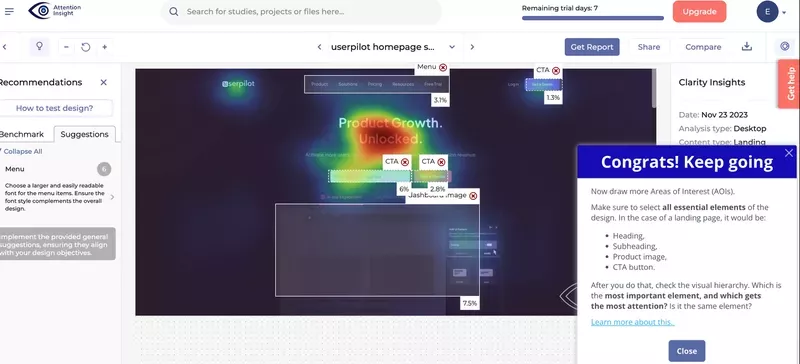
Mistakes to avoid when celebrating achievements
While celebrating user achievements can boost their success, these mistakes can derail your efforts.
- Overusing celebratory messages: When overdone, celebratory messages stop working. They distract users, and they gradually get immune to them.
- Not aligning celebrations with goals: The celebrations must be relevant and timely to reinforce the desired behaviors.
6. Collect user feedback and act on it
User feedback can clue you in on what works about your onboarding — and the product in general — and what doesn’t.
The best way to collect it?
Through in-app surveys in the second half of the onboarding process. That’s how you can reach active product users who have experienced your onboarding while you can still help them.

Email surveys aren’t so good in the B2B context because people who get them aren’t always the end users. They also tend to have lower response rates. Some data indicates that it may be around 2-4% vs. 15-30% for in-app surveys. But they do allow you to reach churned users!
Of course, collecting feedback only makes sense when you act on it.
Mistakes to avoid when collecting surveys
Here are common mistakes to steer clear of when collecting feedback.
- Collecting active feedback only: In addition to surveys, offer a feedback widget for ad-hoc requests and feedback.
- Not asking open-ended questions: Multiple choice or rating questions are easy to interpret, but they offer limited insights. To get to the heart of your users’ needs, ask them open-ended ones.
- Asking too many questions: A survey shouldn’t take more than 2-3 minutes, so that’s 1-2 questions if you include an open-ended one. More questions mean lower response rates — or shallow answers.
7. Provide ongoing support and resources
Even if your onboarding flows are top-notch, they can’t offer all answers or cover all features.
The solution? On-demand support.
This doesn’t mean running a 24/7 call center. Users prefer resolving simple problems on their own, without contacting the support or customer success team!
A resource center with how-to guides, video tutorials, product documentation, and a chatbot is the perfect tool for the job. It allows users to access help more quickly and even when your agents aren’t available.
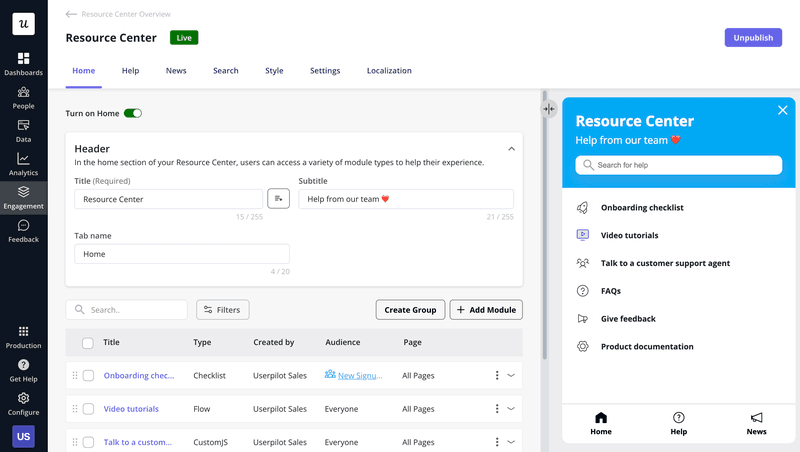
Mistakes to avoid when creating self-serve support
Here are the main pitfalls to avoid when building self-serve support.
- Relying on text-based resources: Text is fairly hard to digest, especially for users with learning difficulties or different learning styles. According to a report by Wyzowl, 65% of users find watching videos the best way to learn how to use a product.
- Not updating content: Ensure resources cover the latest features and include up-to-date visuals.
- Making the resources hard to find: If users can’t easily find them, they won’t bother, so organize them logically and offer a reliable search feature.
8. Monitor user engagement and progress
There are two reasons for regular monitoring of user engagement with your onboarding experiences:
- It helps you identify users who need more help. For example, if a user struggles with certain features, you can send them resources or offer a demo with their account manager.
- It offers insights on how to improve your customer onboarding. For instance, if users fail to complete the checklist, its design may need tweaking.
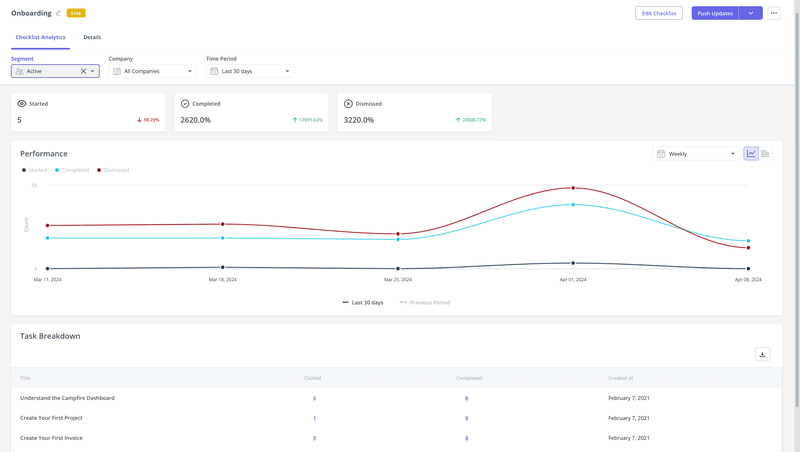
Mistakes to avoid when analyzing engagement
These common mistakes that can lead to missed opportunities:
- Overlooking user segmentation: As already established, you need to personalize onboarding for different user groups, so don’t throw them all into one bag when analyzing their engagement, either.
- Failing to address drop-offs: Any kind of behavior tracking is pointless if you don’t make an effort to analyze the data and tackle the identified issues.
9. Offer ongoing education and training
Onboarding isn’t a one-off exercise. Customer needs evolve, and so does your product, so providing ongoing education is crucial.
Wondering how to do it?
You can design secondary and tertiary onboarding flows, offer tutorials, host webinars, organize conferences, and create certification courses.
The best part? These don’t serve only your existing customers but can also help you attract new ones, boosting your customer acquisition efforts.
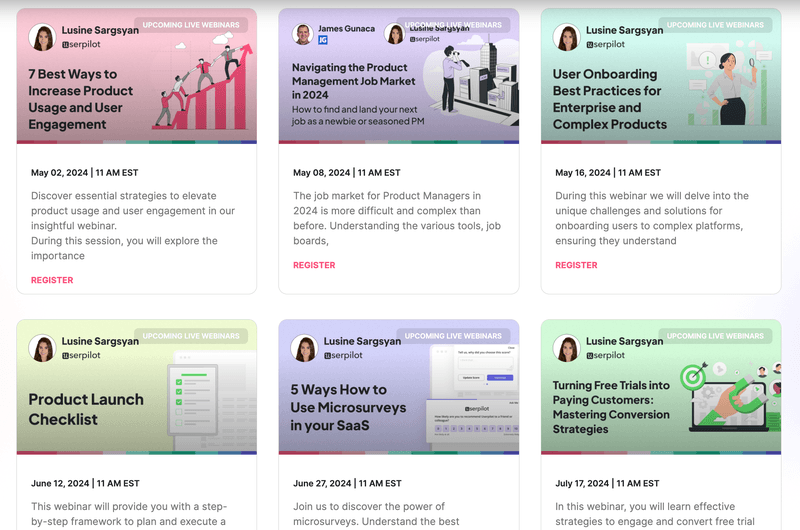
Mistakes to avoid during continuous onboarding
Here are a few of the most common pitfalls that you need to sidestep:
- Ignoring user diversity: Create various resources to accommodate diverse user needs and localize them for speakers of other languages.
- Underestimating time constraints: Bombarding customers with lengthy or time-intensive content can quickly lead to disengagement. For example, Vidyard has found that customers are most likely to complete watching videos of 1-2 minutes.
10. Leverage analytics to make data-driven decisions
Finally, use analytics to measure your product performance and monitor user behavior throughout their journey.
It allows you to make informed decisions about your onboarding strategy without selection bias.
For example, tanking user activation or adoption rates may indicate that the onboarding flows are losing effectiveness despite high completion rates, and you need to adjust them.
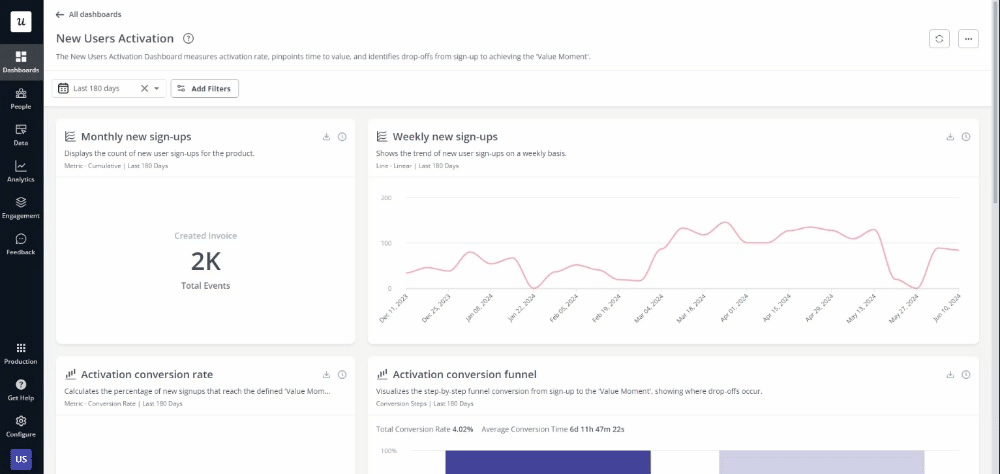
Mistakes to avoid when looking at analytics
While analytics offer concrete data, extracting actionable insights isn’t as easy as it might seem. Common challenges that teams face include:
- Focusing on vanity metrics: Not all metrics give you useful insights. For example, a high onboarding completion rate could indicate success, but it’s useless if it doesn’t increase activation.
- Not setting clear goals: Use a goal-setting framework to define your objectives. If you don’t have sufficient internal data to set the bar, use industry benchmark reports, like Userpilot’s SaaS Product Metrics Benchmark report.
Successful onboarding examples to learn from
Want to see how companies implement these customer onboarding best practices? I’ve got three examples for you.
Loom’s getting started videos
Loom has short, comprehensive video guides that help new customers learn at their own pace. The videos are engaging, and the library is regularly updated as the platform adds new features.
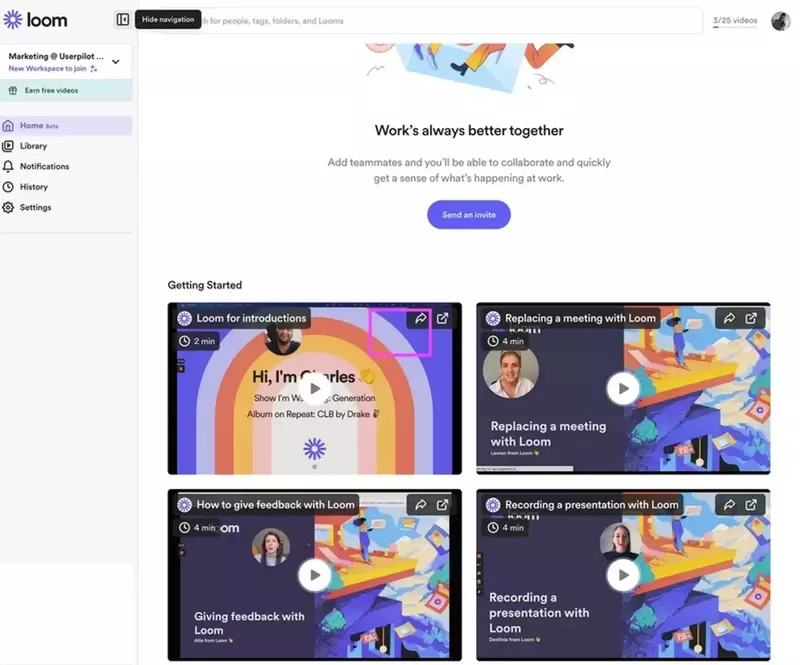
Grammarly’s demo document
A vital part of its onboarding flow, Grammarly gives new users a demo document.
This document contains errors that Grammarly has highlighted, and the platform shows users how to correct them. This way, Grammarly’s new users can quickly master the tool.
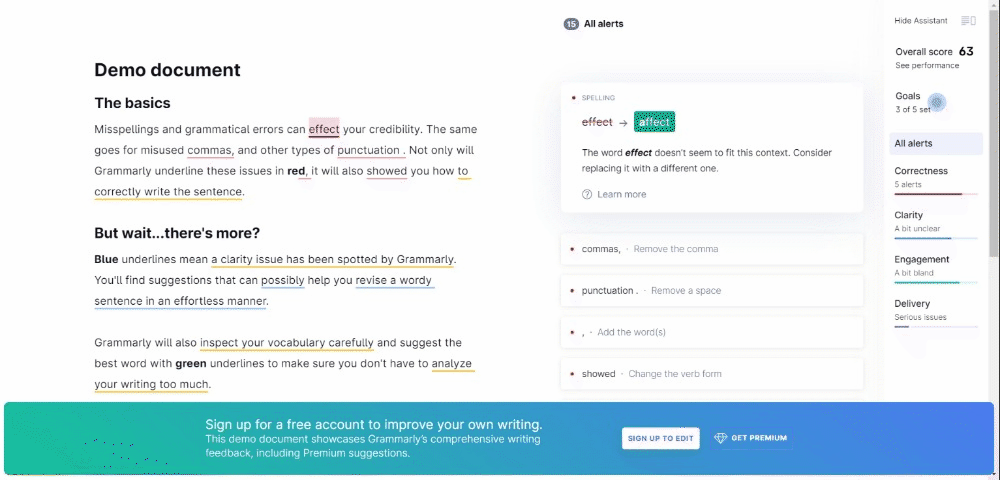
Zendesks’s personalized onboarding
Zendesk personalizes its product walkthroughs based on three user personas: consumers, businesses, and employees.
The first onboarding screen prompts users to choose what best describes them. Once users pick a persona, they get a tailored walkthrough, showing parts of the tool most relevant to their use case. You should implement this strategy if your product caters to a wide audience.
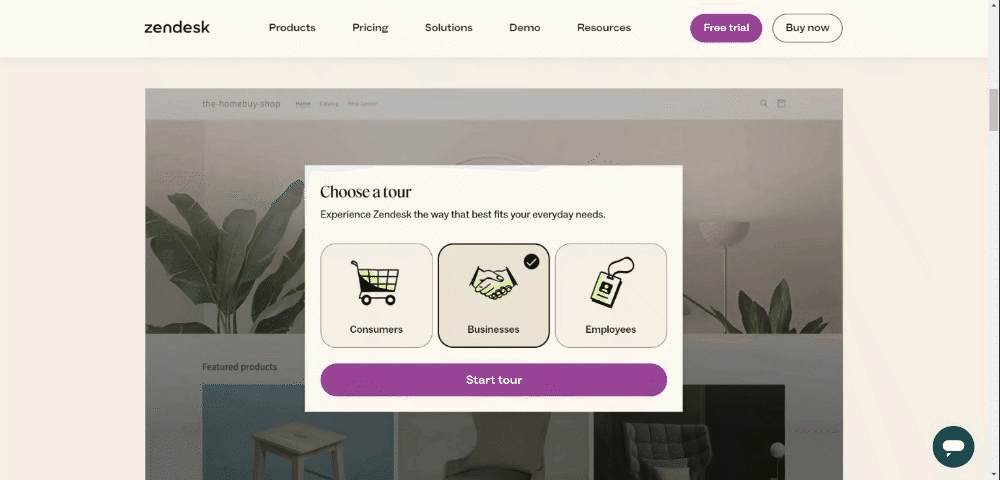
How to implement customer onboarding best practices in real-life
Userpilot isn’t just a customer onboarding platform but a fully-fledged product growth tool. Yes, you can use it not only to design onboarding experiences but also to collect user feedback and analyze their behavior in-app.
Key Userpilot features you’ll find useful for onboarding:
- Interactive walkthroughs: Userpilot supports multiple UI patterns for creating interactive walkthroughs, like tooltips, modals, slideouts, and driven actions.
- Customizable flows: You can tailor your flows to your brand’s style, color, and logo, giving it a native look without coding.
- Onboarding checklists: Create onboarding checklists to show users the important onboarding tasks they need to complete. Add progress bars for a sense of accomplishment.
- Mobile onboarding: Onboard and engage mobile app users by creating personalized messaging, push notifications, and surveys with Userpilot.
- In-app resource center: The Userpilot resource center allows you to create custom modules that support multiple resource formats: text, images, videos – you name it.
- User segmentation: With Userpilot’s advanced segmentation, you can group users based on their needs and target them with bespoke flows.
- User feedback: From onboarding to CES and NPS surveys, Userpilot lets you collect qualitative and quantitative user feedback.
- A/B testing: Not sure what flows will work better? Use the platform to run A/B or multivariate tests and see what drives better results.
- Funnel and path analysis: These features let you analyze the different steps users take through your onboarding process. They help you pinpoint areas of friction and map out happy paths.
- Analytics dashboards: Thanks to Userpilot’s custom dashboards, you can track all your onboarding metrics in one place.
Conclusion
Customer onboarding is vital for users to experience the product value. It shows them the features they need and teaches them how to use them, driving product adoption. It’s also essential for increasing customer satisfaction, loyalty, and retention.
Want to learn more about how to implement the ten customer onboarding best practices with Userpilot? Book a demo!
FAQ
Why is customer onboarding important?
Onboarding sets customers up for success by giving them the knowledge they need to achieve their goals. This translates into higher satisfaction and encourages product loyalty, vital for long-term retention. And when done well, it turns new users into advocates.
What is a good customer onboarding process?
A good customer onboarding process helps them quickly experience the value of your product. It should be clear, personalized, and easy to navigate, guiding customers toward their Aha! moment.
How to successfully onboard a new customer?
Successful onboarding requires understanding customer needs, providing step-by-step guidance on how to meet them, and following up with support and resources to keep them engaged.
What is the most effective method to provide customer onboarding?
The most effective onboarding approach is tailored to each customer segment, uses data to drive improvements, and includes both self-serve resources and live support.
What is a customer onboarding strategy?
A customer onboarding strategy is a plan that helps new customers learn how to use your product. It includes tactics to improve engagement, reduce churn, and foster long-term customer success.








